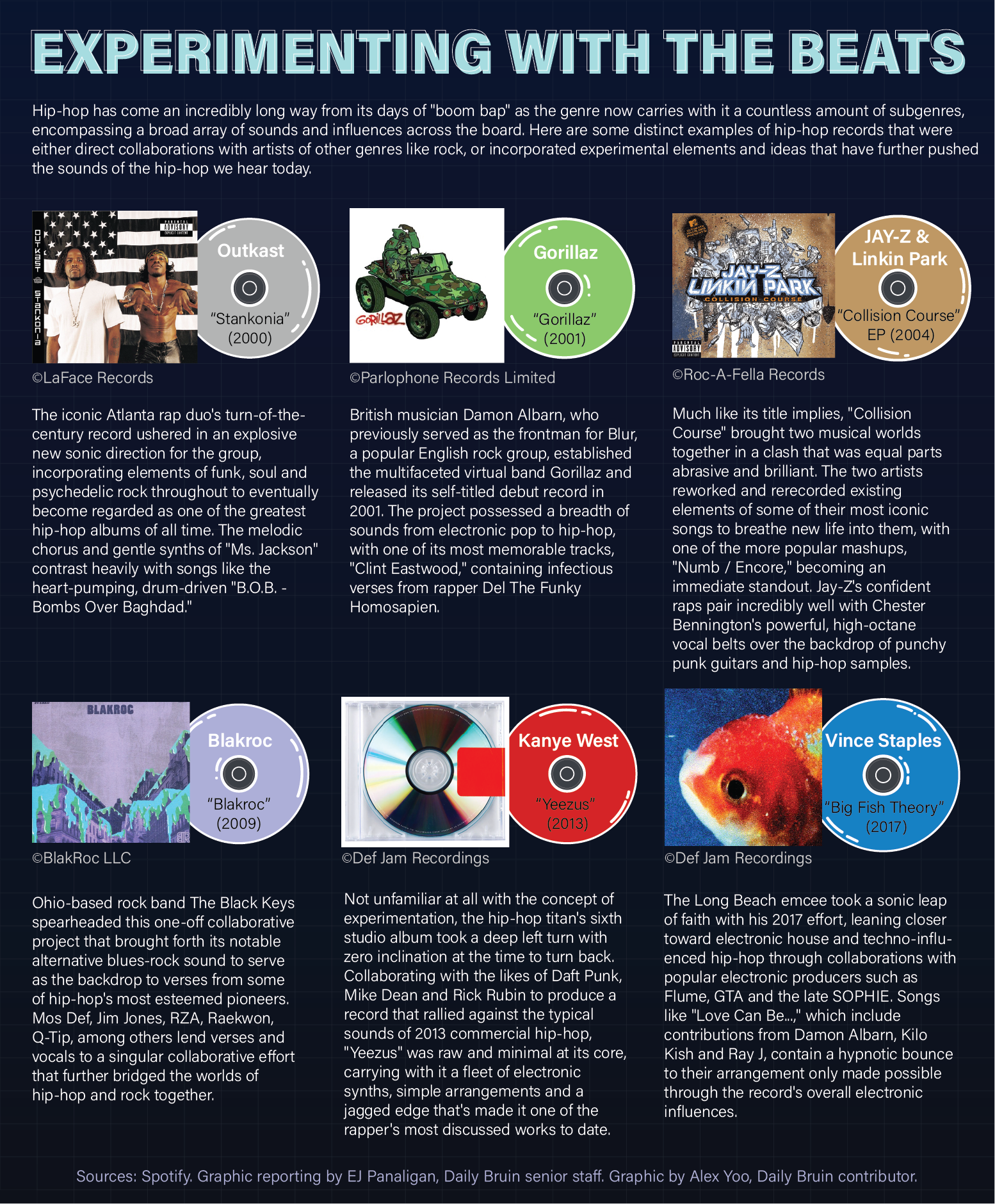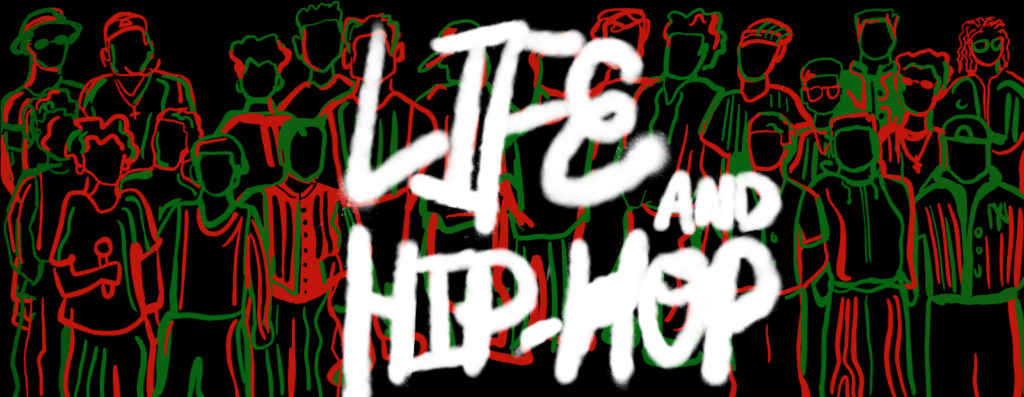Life and Hip-Hop: Rap artists’ tradition of repurposing existing tracks pushes genre forward


By EJ Panaligan
Feb. 24, 2021 10:05 p.m.
The impact of music extends far beyond the play and pause buttons. Formed in the 1970s as an underground movement, hip-hop has expanded into various art forms and musical subgenres – with rap specifically being one of the most popular musical styles among today’s youth. In “Life and Hip-Hop,” columnists Natalie Brown and EJ Panaligan explore and analyze how hip-hop intersects with and influences everyday aspects of life.

When Run-D.M.C. laid down verses over Aerosmith’s “Walk This Way” in 1986, it opened a universe of musical possibilities in hip-hop – one that has roots in the genre’s mid-1970s inception.
Today’s hip-hop we hear on our social media feeds sounds nothing like what was initially presented in those early Bronx neighborhood block parties. The genre has evolved with the times, picking up a broad array of influences along the way, with crossovers into realms such as rock and pop punctuating its progression. But hip-hop’s growth isn’t a simple, linear narrative starting with basic breakbeats and synth lines in the 1970s leading into today’s complex 808s and cinematic atmospheres.
Hints of its eventual evolution were present from the start, said Robert Fink, a musicology professor and chair of the UCLA Herb Alpert School of Music’s music industry minor.
“In the late ’70s, in the first wave of hip-hop when DJs were cutting records together, people were literally rapping over (popular) records – the range of (sounds) that they rapped over is much broader than people think,” Fink said.
In the case of “Walk This Way,” Fink said a form of rhythmic speech called “talking blues,” which has a nursery rhyme quality found in soul and blues music, is employed in Aerosmith lead singer Steven Tyler’s vocal delivery. His singing style lent itself well to Run-D.M.C’s rap flows – a combination that found the song a wealth of mainstream success as an early crossover record.
And as hip-hop began to coexist with rock music as a popular genre in the 1990s zeitgeist, groups like the Beastie Boys and Public Enemy found their identities in a sonic grey area – juggling sound elements from screeching guitars to back-and-forth raps, which Fink said was an attempt to appeal to a wider audience. This sweet spot allowed hip-hop artists to benefit financially by tapping into a revenue stream from an existing touring infrastructure that catered to rock groups, Fink said. At the time, he said rappers paired with a live band and instruments were more alluring to audiences than rappers and their microphones.
[Related: Life and Hip-Hop: No longer just writing on the wall, graffiti rises as a legitimate art form]
Additionally, the discussion of art versus commerce comes into play in dissecting hip-hop artists who have blended contrasting musical influences into their work, said Charles Carson, an associate professor of musicology at the University of Texas at Austin. Jay-Z’s 2004 “Collision Course” EP with rock band Linkin Park mashed up a handful of their existing works to create a crossover record that greatly appealed to both rock and hip-hop fans. The record highlighted Jay-Z’s astute, business-minded manner of culturally and financially positioning himself for success – an example that’s contributed to hip-hop’s astronomical growth in the contemporary moment, Carson said.
“That’s part of the game, the fact that Jay-Z (thought) ‘Let me sell (my music) to these people too.’ We’re looking at him going ‘Man, this guy’s got it figured out,’” Carson said. “That’s like another level of virtuosity, to be able to market yourself like that.”
But financial incentives and mainstream appeal weren’t the only factors that fueled hip-hop’s early experimentation with other genres. The similar attitudes of artists from separate realms made the connections in the music seem natural, said Loren Kajikawa, an associate professor of music at George Washington University and a UCLA musicology doctorate program alumnus.
“For hip-hop to kind of take a rock sound of electric guitars and all of that was a way to push the genre in new ways,” Kajikawa said. “It was kind of adopting the same masculine, rebellious attitude of heavy metal rockers and bringing that to hip-hop.”
[Related: Life and Hip-Hop: Global influences on genre unite artists to impact sound]
On the creative side of hip-hop’s musical relationship to other genres, its influences are bountiful in completely different spaces, said Thomas Crowley, a fourth-year economics student who releases indie-electronic music under the artist name thom.ko. As a producer and songwriter, Crowley said hip-hop’s elements of percussion and drum work play a crucial role in his creative output.
“When you get a really good drum loop, there’s no better feeling, and the rest of the song is just filling in the blanks,” Crowley said. “N.E.R.D. and Pharrell (Williams) are huge inspirations for that kind of stuff, and it’s also a really fun and interesting area to trace (its rhythmic) roots back to.”
The countless subgenres that exist under today’s hip-hop umbrella are the result of decades of rappers crossing over into other spaces, from pop to electronic to rock ‘n’ roll. Carson said the genre’s technological flexibility in functions like sampling has always allowed for that experimentation to feel natural, and the sheer creativity involved in repurposing past works and influences will continue to push the genre’s sonic capabilities.
“(Rappers are) going to be using these sort of same processes of remixing and renegotiating, but using different materials,” Carson said. “It’s going to come out sounding different, but the process is still kind of there in similar ways.”


